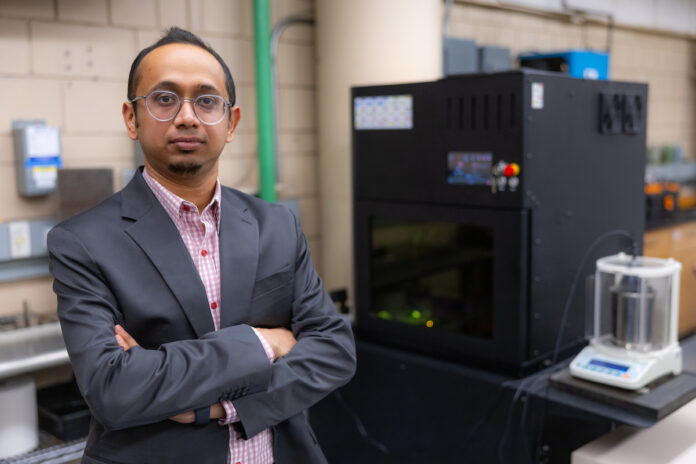
Tungsten, a material difficult to process with Additive Manufacturing, has recently been processed using an unconventional AM technique.
Sougata Roy, an Iowa State University assistant professor of mechanical engineering and a Building a World of Difference Faculty Fellow in Engineering, is leading a study to create shields and components that could be used in nuclear reactors.
The project that could contribute to a clean-energy future, received a 1 million grant from the U.S. Department of Energy.
Why tungsten?
Tungsten is described as a top material candidate for the inner walls of fusion reactors because it maintains strength at high temperatures. It has a high melting temperature, resists erosion under high-energy neutron irradiation and retains low levels of radioactive tritium.
To process the material, the research team will use laser powder-blown directed-energy deposition. It involves using a laser under oxygen-controlled conditions to process tungsten powder and, layer by layer, print the metal.
Roy, who has prior experience in 3D printing steel-based alloys for nuclear energy applications, mentioned that the project will enable him to acquire a new instrument to assess the mechanical properties of the printed samples, including instrumented indentation characteristics and fracture toughness. According to Roy, the most distinctive aspect of the project isn’t the printing itself, but rather the integration of physics-based modeling and computational simulations, which will enhance the experimental work.
The modeling and simulations, which will include work with machine learning and artificial intelligence tools, will help researchers establish the theories behind their experimental results. The simulations will also help them develop recipes for tungsten alloys that can withstand the extreme conditions inside a nuclear reactor.
“We’ll start with pure tungsten,” he said. “Eventually we’ll develop new alloys to resolve this cracking challenge.”
Remember, you can post free-of-charge job opportunities in the AM Industry on 3D ADEPT Media or look for a job via our job board. Make sure to follow us on our social networks and subscribe to our weekly newsletter: Facebook, Twitter, LinkedIn & Instagram! If you want to be featured in the next issue of our digital magazine or if you hear a story that needs to be heard, make sure to send it to contact@3dadept.com.





